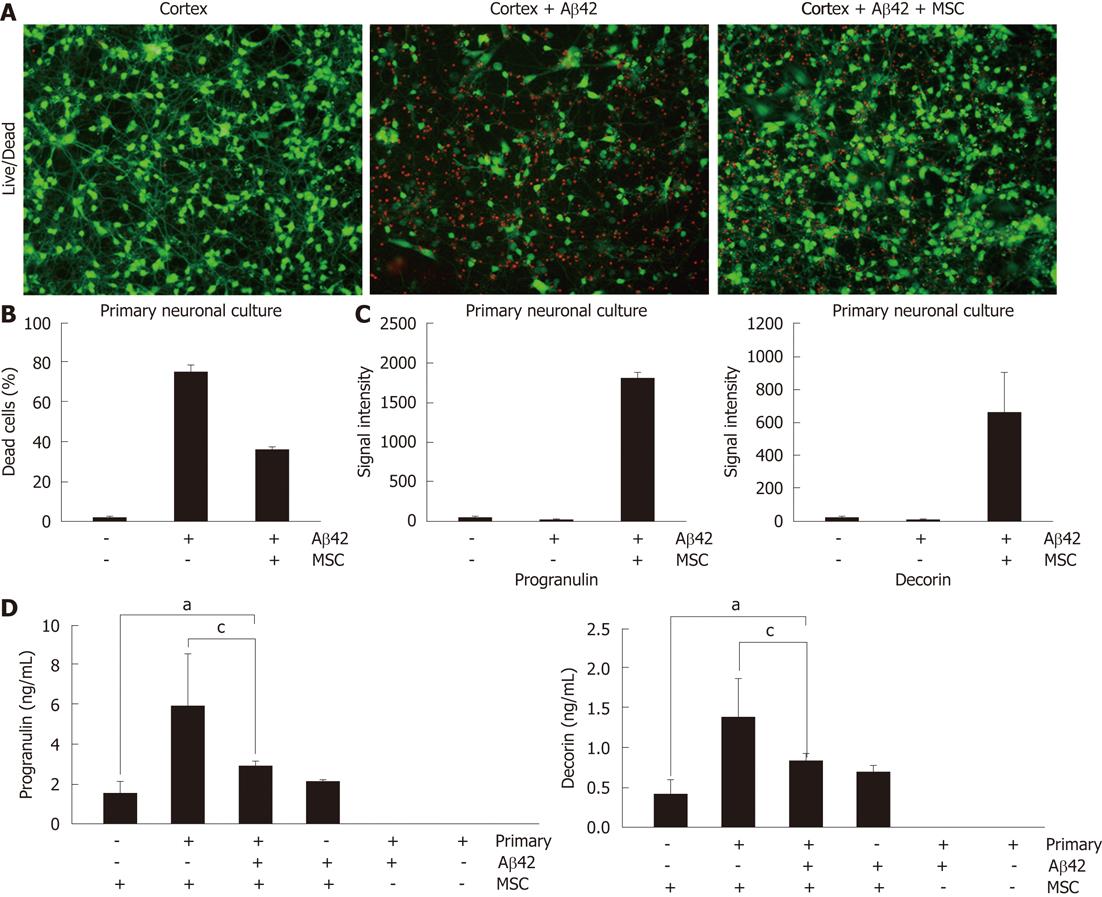Copyright
©2012 Baishideng Publishing Group Co.
World J Stem Cells. Nov 26, 2012; 4(11): 110-116
Published online Nov 26, 2012. doi: 10.4252/wjsc.v4.i11.110
Published online Nov 26, 2012. doi: 10.4252/wjsc.v4.i11.110
Figure 1 Decorin and progranulin are highly secreted from human umbilical cord blood-derived mesenchymal stem cells.
A: Human umbilical cord blood-derived mesenchymal stem cells (hUCB-MSCs) were co-cultured with amyloid-β42-exposed rat primary neuronal cells for 24 h in a Transwell chamber. Then, rat primary neuronal cells were stained by Live/Dead staining. Green color indicates surviving neuronal cells. B: Percentage of dead cells was calculated (P < 0.05, n = 4 per group); C: To identify paracrine factors, co-cultured media was analyzed by antibody-based array (RayBio). Spot intensity of progranulin and decorin in co-cultured media was much higher compared to rat primary neuronal cells in the absence of hUCB-MSC (P < 0.05, n = 3 per group); D: Each medium used in the Transwell was analyzed by enzyme-linked immunosorbant assay for progranulin and decorin (aP < 0.05, cP < 0.05, n = 3 per group).
-
Citation: Kim JY, Kim DH, Kim JH, Yang YS, Oh W, Lee EH, Chang JW. Umbilical cord blood mesenchymal stem cells protect amyloid-β42 neurotoxicity
via paracrine. World J Stem Cells 2012; 4(11): 110-116 - URL: https://www.wjgnet.com/1948-0210/full/v4/i11/110.htm
- DOI: https://dx.doi.org/10.4252/wjsc.v4.i11.110









